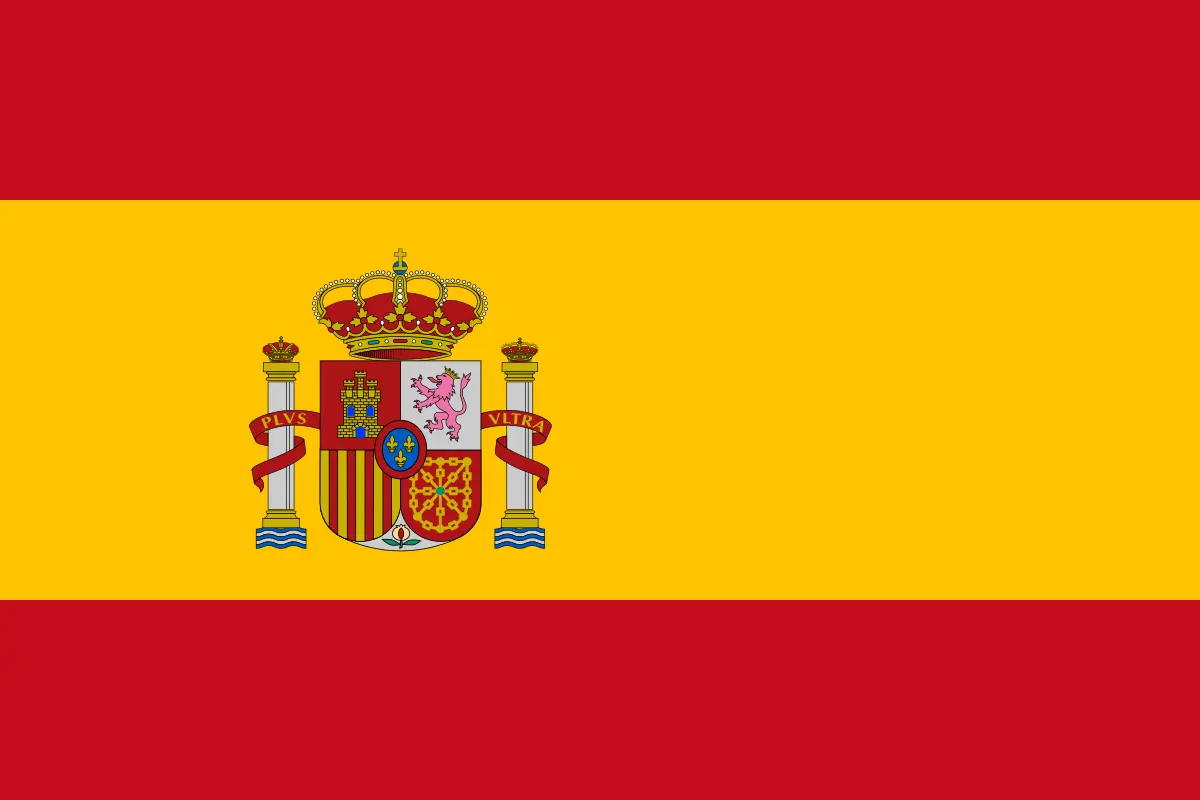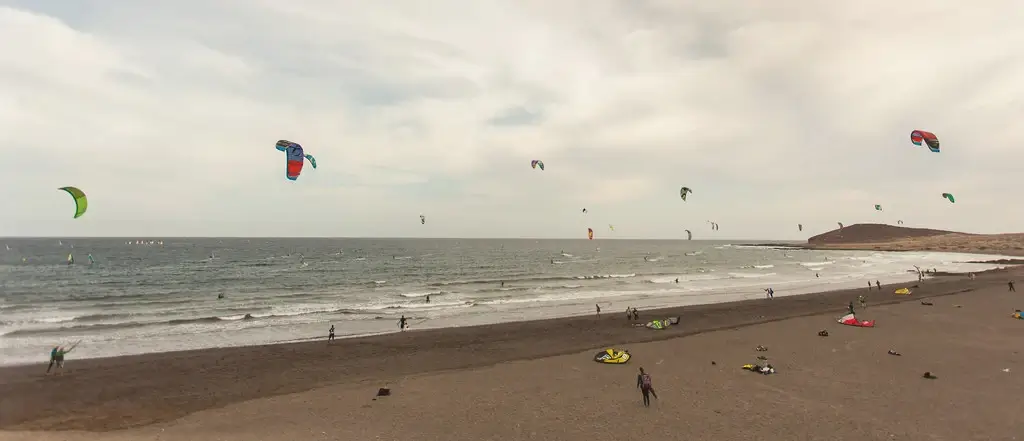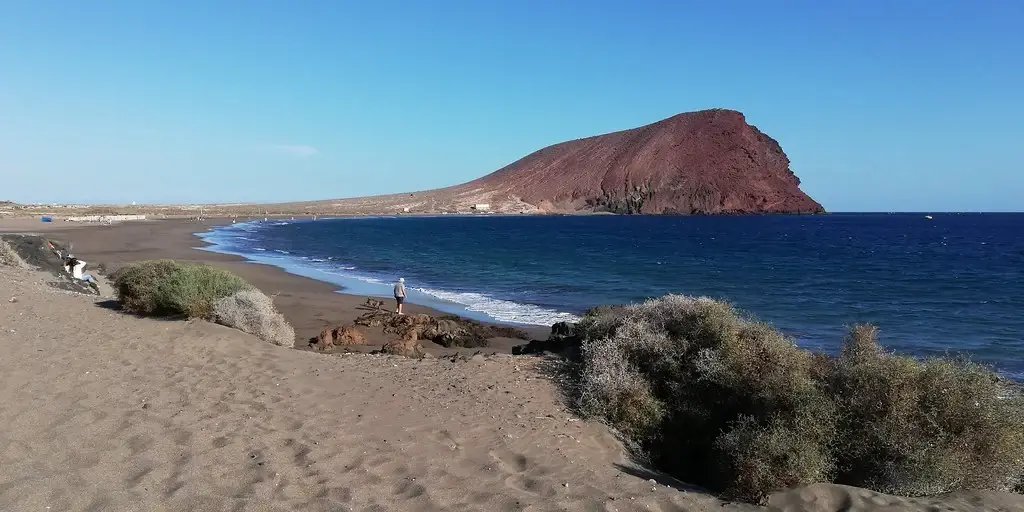Best Kitesurfing Spots at Tenerife

Welcome to this comprehensive article on the best kitesurfing spots in Tenerife, a captivating island renowned for its exceptional wind and water conditions. Whether you are a seasoned kitesurfer or a beginner looking to learn, this guide will provide valuable insights into the top spots such as El Médano, Playa de Tejita, Los Cristianos, and Las Galletas.
We will also explore the diverse activities and attractions Tenerife has to offer, making it an ideal destination for adventure seekers and nature lovers alike. Let’s embark on an exciting kitesurfing adventure in Tenerife!
Weather
The island experiences relatively mild and stable temperatures throughout the year. Here’s a general overview of the average yearly weather in Tenerife:

Temperature:
- Winter (December to February): Average high temperatures range from 19°C to 22°C (66°F to 72°F), with cooler evenings.
- Spring (March to May): Temperatures start to warm up, with average highs between 22°C and 26°C (72°F to 79°F).
- Summer (June to August): Warmest months with average highs between 26°C and 30°C (79°F to 86°F).
- Autumn (September to November): Gradual cooling, with average highs ranging from 26°C to 22°C (79°F to 72°F).
Rainfall:
- Tenerife experiences a relatively dry climate, especially in the southern parts. The northern regions are generally more humid and receive more rainfall.
- Rainfall is rare in the summer, while the winter months may see some occasional showers.
Sunshine:
- Tenerife is known for its sunny weather. You can expect a high number of sunny days throughout the year, particularly in the southern and western parts of the island.
It’s important to note that Tenerife’s climate can vary depending on the specific region of the island. The southern parts are generally warmer and drier, while the north is greener and receives more rainfall. Additionally, there can be microclimates in different areas due to the island’s diverse topography.
Overall, Tenerife is a popular destination for tourists seeking pleasant weather, making it a great choice for both summer and winter vacations. However, for the most accurate and up-to-date weather information, it’s advisable to check a reliable weather forecast before your trip.
Wind conditions
Tenerife, like many islands, experiences varying wind conditions depending on the time of year and location on the island. The island’s wind patterns are influenced by several factors, including trade winds, topography, and proximity to the ocean.
Here’s an overview of the general wind conditions you can expect in Tenerife throughout the year:
Trade Winds:
- The Canary Islands, including Tenerife, are influenced by the northeast trade winds (known as the “Alisios” in Spanish), which blow from the subtropical high-pressure systems of the Azores.
- These trade winds are most prominent from late spring to early autumn (roughly from May to September). During this period, you can expect consistent, gentle to moderate breezes, especially in the coastal areas.
Calima:
- Occasionally, Tenerife experiences a weather phenomenon called “Calima.” Calima is characterized by strong winds carrying dust and sand from the Sahara Desert. These winds can lead to reduced visibility and hazy conditions. Calima events are most common in the summer and can last for several days.
Wind Variability:
- Wind conditions can vary significantly on the island due to its diverse topography. The northern and northeastern parts of Tenerife are typically windier than the southern and western regions, which are sheltered by the mountainous terrain.
- In some areas, you may experience more consistent winds that are suitable for activities like windsurfing and kitesurfing.
Seasonal Changes:
- Wind conditions can change with the seasons. While the summer months (June to September) tend to be relatively calm with consistent trade winds, the winter months (December to February) can see occasional gustier conditions.
Water conditions
The water conditions around Tenerife, a Canary Island located in the Atlantic Ocean, can vary depending on the time of year, location, and specific activities you’re interested in. Here’s an overview of the typical water conditions and factors to consider when visiting Tenerife:
Sea Temperature:
- Tenerife enjoys relatively mild and pleasant sea temperatures year-round, making it suitable for swimming and water activities.
- The sea temperature varies between 18°C to 24°C (64°F to 75°F) during the winter months and 23°C to 26°C (73°F to 79°F) in the summer, making it comfortable for most beachgoers.
Tides and Currents:
- Tides and currents can vary, especially in specific areas around the island. While many beaches have calm and safe conditions for swimming, it’s essential to be aware of any local warnings or advisories.
Wave Conditions:
- The wave conditions can vary depending on the location. The north and western coasts of Tenerife are known for their larger waves and are popular among surfers, while the southern and eastern coasts typically have calmer waters.
Here are the top kitesurfing spots in Tenerife with the best water conditions:
El Médano: Known as the wind and kitesurfing capital of Tenerife, El Médano boasts perfect wind conditions and flat, crystal-clear waters for freestyle kiteboarding.
Playa de Tejita: This beach is ideal for beginners and intermediate riders due to its gentle waves and consistent wind. he water temperature is pleasant throughout the year, making it a great spot for kitesurfing.
- Playa del Cabezo: Situated in the charming town of El Médano, Playa del Cabezo offers a mix of choppy waters and small waves, perfect for advanced riders looking for a challenge.
The best time to go kitesurfing in Tenerife is during the summer months when the wind is strongest and the water temperature is at its warmest.

🏄 El Médano
El Médano, located on the southeast coast of Tenerife near the airport, is the main kitesurfing hub on the island. It’s well-known for its consistent wind, accessible beach, and mix of conditions that suit both beginners and advanced riders. Here’s a detailed breakdown of the kitesurfing conditions:
Water Conditions
- Flat to choppy water inside the bay
- Small to medium waves further out or near the rocky point (El Cabezo)
- Not flatwater like a lagoon, but relatively manageable chop depending on wind strength
- Excellent for freeride, small wave riding, and learning
Wind Conditions
- Consistent NE trade winds, especially strong from May to September
- Wind blows side-onshore (from the left), which is ideal for safety
- Average wind speed: 15–25 knots during peak season
- Winter months (Dec–Feb) can also be good, though slightly less consistent
Tides
- Tides affect launch space more than water conditions
- At high tide, the sandy beach area is reduced and can get narrow — timing your launch is important
- Tidal influence on water depth is moderate, but still important for beginners practicing near shore
Beach Characteristics
- Wide sandy beach at low tide, excellent for launching and landing
- Designated zones for kitesurfing, windsurfing, and swimming
- Rescue service available (often run by local schools)
- Beginner-friendly in the main bay area; more advanced riders head to El Cabezo for waves
How It’s Situated
- Located on the southeast coast, perfectly exposed to the NE trades
- The bay is semi-sheltered by Montaña Roja, which also creates some local acceleration of wind
- Easily accessible from Tenerife South Airport (TFS) — only a 10-minute drive
Summary
- Waves: Small to medium, depending on wind strength
- Flat water: Not truly flat, but choppy to semi-flat inside the bay
- Tides: Moderate impact; narrow beach at high tide
- Beach: Sandy, well-zoned, and beginner-friendly
- Access: Easy, with parking, rentals, and schools nearby
El Médano is ideal if you’re looking for reliable wind, varied water conditions, and a lively kitesurfing community — all within a short trip from the airport.

🏄 Playa de Tejita
Playa de La Tejita, located just east of El Médano and at the base of Montaña Roja, is a scenic and more relaxed alternative to the main kitesurfing beach in Tenerife. While not as busy or regulated as El Médano, it’s still popular among kiters — but with a few key considerations.
Water Conditions
- Choppy to small waves, depending on wind strength
- Slightly more exposed than El Médano, so less shelter from swell
- No flatwater — typically rolling chop or wind-driven waves
Wind Conditions
- Same NE trade winds as El Médano, but can feel slightly less consistent or gustier due to the mountain’s shape
- Wind is still side-onshore (from the left), making it safe for most levels
- Best from May to September, though there are windy days outside that period
Tides
- Tide impacts beach width significantly, especially at high tide
- Waves can break close to shore during high tide, making launching a bit trickier
- Watch for shore break and timing if you’re launching in surf
Beach Characteristics
- Long, wide sandy beach with plenty of space at low to mid tide
- Quieter and more natural than El Médano, with fewer people and kiters
- No designated kite zone, and not officially regulated for kitesurfing, so ride at your own risk
- Launching is straightforward when conditions are moderate, but shore break can complicate things in stronger wind/swell
How It’s Situated
- Lies to the east of El Médano, with views of and shelter from Montaña Roja
- Located in a protected natural area, so there may be restrictions at times — particularly near dunes or wildlife zones
- No direct facilities for kiting (e.g. schools or rentals on the beach), but you can walk from El Médano with gear
Summary
- Waves: Small to moderate, occasionally with shore break
- Flat water: None — generally choppy to wavy
- Tides: Affects beach space and launch difficulty
- Beach: Wide and sandy, but no services; natural and quiet
- Access: Easy by car, walking distance from El Médano
Playa de La Tejita is best suited for experienced kiters looking for a more relaxed or scenic setting. Beginners and those needing lessons or rescue support are better off staying at El Médano.

🏄 Playa del Cabezo
Playa del Cabezo, located on the northwestern edge of El Médano in Tenerife, is one of the most advanced kitesurfing spots on the island. It’s popular with local riders and pros, especially for wave kiting and strong wind sessions.
Water Conditions
- Wave spot – expect medium to large Atlantic waves, especially in winter
- The waves break over a rocky reef, offering clean faces for wave riding
- No flatwater — this is strictly a wave kiting zone
- Can be challenging in stronger swell or cross conditions
Wind Conditions
- Same NE trade winds as El Médano, but often stronger and cleaner
- Wind blows side-onshore (from the left), ideal for wave riding
- Best months: May–September, though it works year-round with frontal systems
Tides
- Tide plays a significant role here:
- High tide: Less visible reef, trickier launch, sometimes more powerful shore break
- Low tide: Reef is more exposed, easier wave formation but hazardous for falls
- Always assess the reef exposure and entry point before riding
Beach Characteristics
- Narrow and rocky beach with some launch space, but not much room to make mistakes
- Launching can be tricky, especially with strong winds and swell
- Not beginner-friendly – best suited for confident riders experienced in waves
- No soft sand for launching like at El Médano
How It’s Situated
- Located on the north end of El Médano, just a few minutes’ walk from the main beach
- Faces southeast, perfectly exposed to NE trades and ocean swell
- Reef break creates ideal waves for kitesurfers and windsurfers
- Close to shops, cafes, and the kiting hub of town
Summary
- Waves: Medium to large reef break – excellent for wave riding
- Flat water: None
- Tides: Important – impacts reef exposure and wave behavior
- Beach: Rocky, narrow, challenging launch
- Access: Very close to El Médano center, but technically and physically demanding
Playa del Cabezo is Tenerife’s go-to spot for advanced kitesurfers chasing clean, rideable waves with strong wind. If you’re into wave riding and confident with reef breaks and power, Cabezo is one of the best wave kiting spots in Europe.
Where Kitesurfing Is Not Allowed
- Resort beaches (Los Cristianos, Playa de las Américas, Costa Adeje)
These are crowded tourist zones and kiting is prohibited for safety reasons. - Northern coast & most non-designated beaches
Even if the wind is good, local regulations and lack of rescue make them off-limits or unsafe.
Other things to do
In addition to the thrilling kitesurfing opportunities, visitors to Las Galletas can also enjoy a variety of other activities and attractions.
For those who appreciate the great outdoors, the area offers an array of hiking trails that showcase the stunning natural beauty of Tenerife. From leisurely coastal walks to challenging mountain treks, there is something for every level of hiker.
Food enthusiasts will delight in the local cuisine, which features fresh seafood and traditional Spanish dishes.
Cultural festivals are also a highlight in Las Galletas, offering visitors a chance to immerse themselves in the vibrant traditions and customs of the region.
Scuba diving enthusiasts can explore the underwater world of Tenerife, while whale watching tours provide an opportunity to witness these majestic creatures in their natural habitat.
How to get there
To access the best kitesurfing spots in Tenerife, it is essential to plan your transportation with a focus on convenience and efficiency. Here are some options to consider:
- Public transportation options: Tenerife has a well-developed bus network that can take you to various parts of the island, including kitesurfing spots. Check the schedules and routes to find the most convenient option for you.
- Rental car options: Renting a car can provide you with the flexibility to explore the island at your own pace. There are several car rental companies available in Tenerife, offering a range of vehicle options to suit your needs.
- Taxi services: Taxis are readily available in Tenerife and can be a convenient way to get to the kitesurfing spots. However, keep in mind that the costs may vary depending on the distance traveled.
For those coming from further away, Tenerife has two airports: Tenerife North Airport (TFN) and Tenerife South Airport (TFS). Both airports have good connections to major cities in Europe and beyond.
Additionally, ferry services are available from neighboring islands for those coming from within the Canary Islands.

Hmmm… to be honest, the information given on this page is bad. It’s partly not true and puts some spots as havens that aren’t really 100% legal to go kitesurfing…
Punta Blanca has almost never wind because you need south wind and not the Tradewinds, they come from nord-eastish… las galletas hasn’t good wind either… and los cristianos you can go with south wind as well but its not an official kitesurf spot and if you go their you are invading swimming areas… And los cristianos has a lot but definitely not good wind conditions!!…
With all the respect I will stop here, but this page is full of wrong information that later people believe and get into trouble… The only real spot is el medano, maybe cabezo but its mainly windsurfers, and with south wind that’s almost only in the winter month la tejita, but even there if the riders don’t behave, they will be kicked out by police
Hi!
Thanks for the input. I’ll make the necessary changes to this web page.
Best regards,
Evert
Great article! That is the kind of info that should be shared around the internet.
Disgrace on Google for not positioning this publish upper!
Come on over and discuss with my web site . Thanks
=)
Thanks!